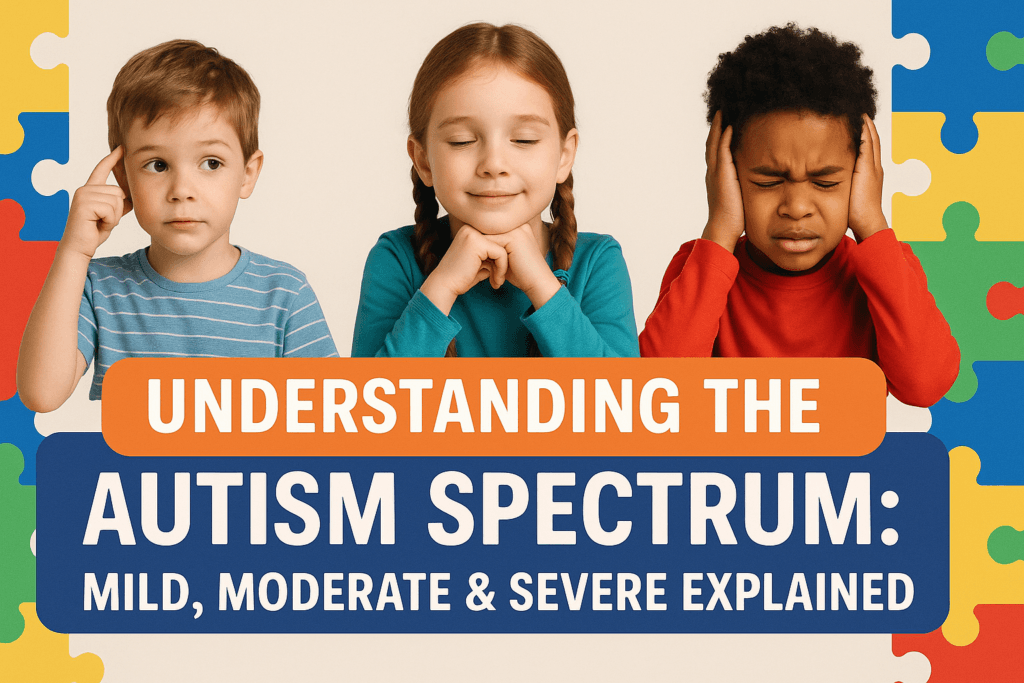Understanding the levels of autism spectrum is crucial for caregivers, educators, and healthcare professionals. Autism Spectrum Disorder (ASD) is a broad diagnosis, and individuals with autism can exhibit a range of behaviors and challenges. The spectrum is often classified into three levels: mild (Level 1), moderate (Level 2), and severe (Level 3). These classifications help guide therapy, education plans, and daily care routines.
What is the Autism Spectrum?
The autism spectrum refers to a range of conditions classified under ASD. These include challenges with communication, social interaction, restricted interests, and repetitive behaviors. The levels of autism spectrum describe the degree of support an individual may need.
Level 1: Mild Autism (Requiring Support)
Individuals with Level 1 autism are often referred to as having high-functioning autism. They may have:
- Difficulty with social interactions
- Trouble initiating conversations
- Mild sensory sensitivities
- Rigid routines or behaviors
Example: A child may do well in school but struggle with making friends. They might insist on wearing the same clothes or eating the same food daily.
Support Recommendations:
- Social skills training
- Behavioral therapy (ABA or CBT)
- Speech therapy if language delays exist
Level 2: Moderate Autism (Requiring Substantial Support)
People at this level face more significant challenges than those at Level 1. Characteristics include:
- Limited verbal communication
- Noticeable difficulty with social cues
- Repetitive behaviors that interfere with functioning
Example: A child may speak in short phrases and avoid eye contact. They might have trouble coping with changes in routine.
Support Recommendations:
- One-on-one teaching or shadowing in school
- Occupational therapy
- Family counseling
Level 3: Severe Autism (Requiring Very Substantial Support)
Level 3 individuals have severe difficulties in verbal and non-verbal communication. They may:
- Be non-verbal or use very few words
- Exhibit self-harming behaviors
- Require constant supervision and care
Example: An individual may be unable to speak, experience severe meltdowns, or have extreme sensitivity to noise and light.
Support Recommendations:
- Full-time caregiver or residential care
- Assistive technology (AAC devices)
- Intensive behavior interventions
A Comparative Table of Autism Spectrum Levels
| Criteria | Level 1 (Mild) | Level 2 (Moderate) | Level 3 (Severe) |
|---|---|---|---|
| Social Communication | Minor issues | Noticeable issues | Severe impairments |
| Behavioral Flexibility | Inflexible | Frequently rigid | Extremely rigid |
| Verbal Skills | Fluent | Limited | Minimal/none |
| Support Requirement | Occasional | Daily | Constant |
Frequently Asked Questions
Q: Can someone move between levels of autism spectrum?
A: Yes, with early intervention and support, individuals can show improvement, though the underlying diagnosis remains.
Q: Are the levels of autism spectrum used in diagnosis?
A: Yes, professionals use them to guide therapy plans and support services.
Q: What causes the different levels?
A: Genetic and neurological factors, combined with environmental influences, contribute to the spectrum.
The Role of Autism Wings Inc.
At Autism Wings Inc., we advocate for inclusive support for all levels of autism spectrum. We are building a specialized school to provide customized education and therapy for children across the spectrum.
📢 Support our dream by donating to our fundraiser here:
👉 Help Build an Autism School of Hope and Empowerment
Your contribution can transform a child’s future.

